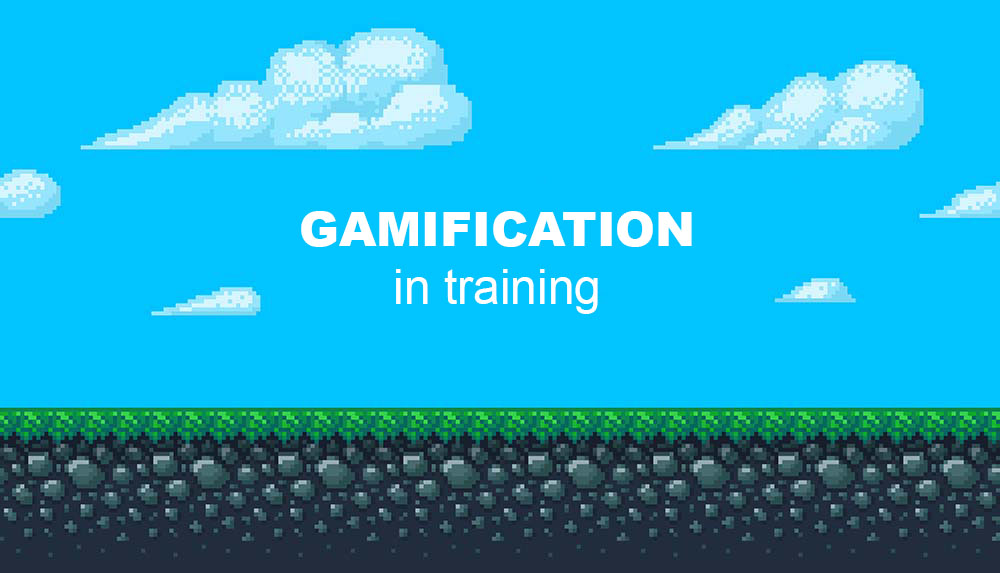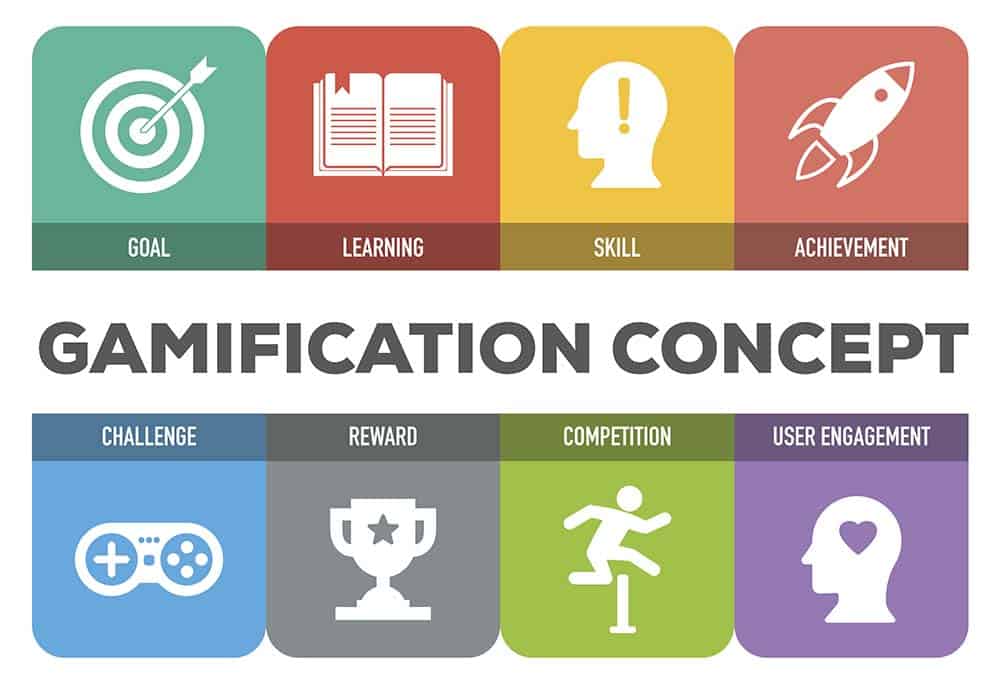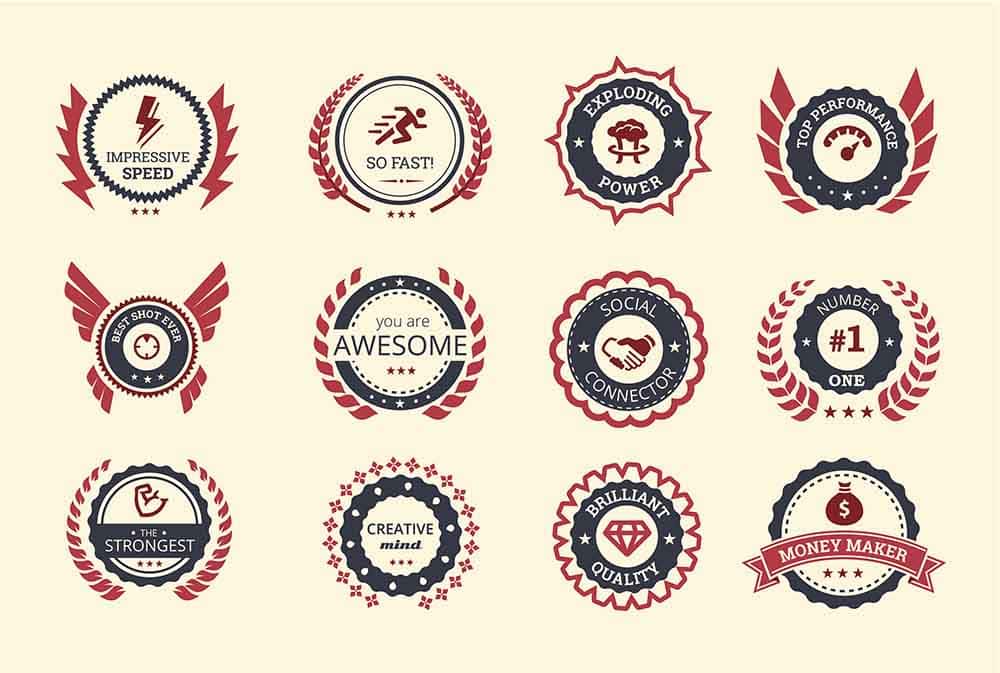Gamification in Training: 4 Ways to Bring Games Into the Classroom

In this blog post, we explore how to use gamification to make teaching more playful by balancing more theoretical learning material with playfulness and progression in the learning of your training participants.
Before we look at different ways you can introduce gamification into the classroom, we will take a look at what gamification is and what benefits it can have.
What is gamification?
Gamification is the use of game design elements and game principles in situations outside of the gaming context. The goal is to maximize teaching and engagement by capturing student interest and inspiring them to continue learning.
Gaming utilizes natural psychological needs in humans: competitive instinct, desire to succeed, the hype of status, ability of altruistic cooperation, satisfaction of completing tasks and self-realization needs.
Using gamification techniques can help increase participation, increase excitement, motivate problem-solving, as well as empower and enhance learning.
The methods in the field of gaming are many. Here are some of the most common methods:
- Use of progress indicators, such as points and scores
- Top score boards
- Awards for significant achievements
- Linking tasks with storytelling
- Immediate feedback
- Competition
- Different levels with progressively increasing difficulty
- Illustrations of percentage of task performed
- Instant feedback
- Cooperation
Gamification is used in a number of different areas, including marketing, recruitment and physical training. The technique is widely used in learning – also for adults.
Gamification in training
Since players voluntarily spend countless hours on gaming and problem solving, researchers, teachers, and instructors have explored ways to leverage the video game’s power of motivation and are now beginning to utilise it in the classroom.
Games in various forms increase motivation through involvement, and if involvement is important somewhere, then it is in the learning setting.
Gamification of teaching operates under the assumption that the same type of excitement that players experience when playing games can be translated into an educational context and used to facilitate learning and influence student behavior in a positive way.
It is important to note that games cannot replace education, but it can be used to improve the overall learning experience.
Benefits of gamification in training
Gamification in training can offer a number of benefits, including:
- The students feel ownership of their learning
- More relaxed atmosphere when it comes to making mistakes, since students are able to try repeatedly until they manage
- More fun in the classroom
- Learning becomes visible through progress indicators
- Students get a sense of goal achievement and mastery
- Students can discover their own motivation for learning
- Students can explore different identities through different roles in role play
- Students are often more comfortable in game environments
How can I use gamification in the classroom?
There are a number of different ways to introduce gamification to the classroom and to your course and training participants. In this section we will present some methods that we hope will give you some ideas of how to introduce gamification yourself.
1. Alter the language
Instead of referring to professional requirements with the typical associated academic terms, you can use game-like names and phrases.
Example:
Creating a presentation is referred to as “starting a mission” and writing an exam may be “defeating a fight”. Completing a task can be classified as “completing a mission,” and performing higher-difficulty tasks may be ” levelling up”.
2. Give out rewards
Reward your participants with points, badges, completion certificates, training certificates or prizes, both during the training and after the training has been completed. Give out rewards for new skills, completed training, and accomplished professional skills to motivate students to engage and work hard to reach the ultimate goal.
Example:
Participants receive a new badge when they “level up”, i.e. when they have completed enough tasks. When the training is completed and passed, the participants receive a completioncertificate. For significant achievements, you can present merit awards.
3. Create a narrative
Incorporating a structural narrative into teaching can also act as a strong motivator and as a reinforcement of the learning material, especially if the narrative suits the learning content. The learning environment can be structured to provide an overall narrative that serves as a context for all learning activities.
The structure of a course can be customized in different ways to bring in elements of gamification. These adaptations can affect the student’s role, the role of teacher and the role of the learning environment.
A student’s role in a gamified environment may be to take on a role and a game name that they use in learning. Students can be organized in teams or clans and be invited to embark on various missions or treasure hunts with their team members. They can be encouraged to help other teammates, as well as players on other teams if they have mastered a learning task before the other teams.
Example:
A training group learning about world geography is divided into groups of explorers, each of whom is assigned a country to explore and report on.
4. Bring out the competitive instinct in learning
When I studied at BI, there was one thing that made the students really eager in the classroom. It was when the lecturer asked us to bring out our mobile phones and prepare for a Kahoot!
Kahoot! is a free game-based learning platform, with multiple-choice tasks that the instructor/teacher sets up. Players answer the questions from their own devices. The tasks, answer key and top five players with the highest scores appear on the split screen in front of the group. Everyone wants to be among the top five players and eagerly press what they think is the right answer to the tasks.
Kahoot! is based on research that shows what works and does not work in the classroom. Surveys and indications show that the use of Kahoot! contributes to learning through increased social and performance motivation.
Choose the techniques that work for your audience
If you are already using or considering using gamification, be sure to consider the unique needs of your students and do more than just use points and levels to motivate the players.
The best gamification systems utilize other elements, such as storytelling and collaboration between students to truly capture students’ interest. This creates sustained engagement and good learning.
Did you like this article? Don’t forget to share it!
Want to become a better training provider?
Get insights, tips, ideas and inspiration right in your inbox.
About FrontCore
Over 2600 training providers use solutions from FrontCore – and that’s not without reason. FrontCore is one of Norway’s leading competence environments within web marketing and cloud systems for training management. With over 18 years of experience from the training industry and our finger on the market pulse continuously, we help training providers achieve more efficient operations and higher revenue.
Products
Get more time for value creation
Automate routine tasks and streamline your everyday with Training Administration from FrontCore.
See why over 2600 training providers trust FrontCore

Author: Eline Hagene
Inbound Marketing Manager
Eline produces content to help training providers achieve a more efficient and profitable day. She is certified in the Inbound methodology through Hubspot and has completed a Bachelor of Marketing management at BI Norwegian School of Management. Visit Eline’s LinkedIn profile here.
Understanding instructor-led training (ILT)
Instructor-led training (ILT) creates interactive, engaging learning experiences through real-time feedback and collaboration. Discover ILT formats, benefits, and how to combine it with e-learning for flexible, impactful training delivery.
Everything to know about customer education
Customer education builds loyalty, boosts revenue, and reduces churn. Learn how to create engaging learning experiences, choose the right tools, and implement a strategy that turns customers into long-term advocates for your business.
Icebreakers for training
Starting a new course or job can feel awkward. Icebreakers help break down barriers, spark conversation, and create a safe, fun learning environment. Discover 15 creative icebreakers to energize your training sessions and connect participants from the start.








